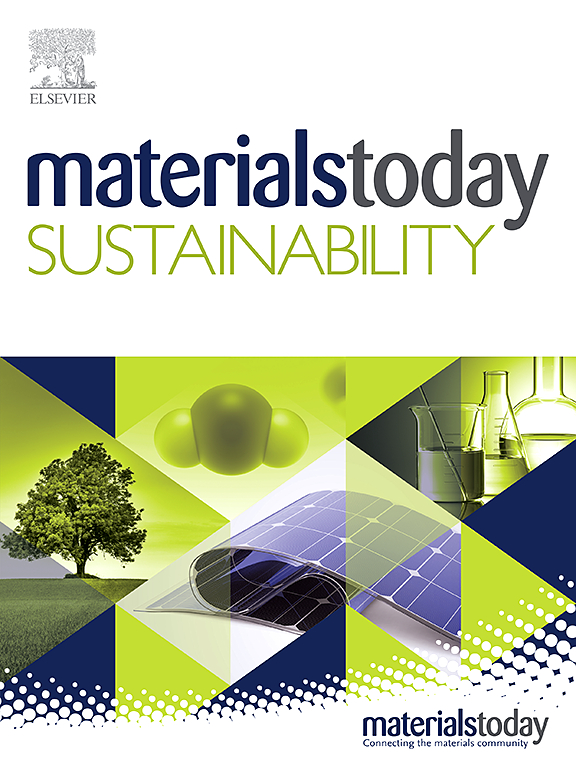Electrocatalysts for ammonia production and nitrogen cycle management in Zinc-NOx batteries: Progress, challenges, and future perspectives
IF 7.1
3区 材料科学
Q1 GREEN & SUSTAINABLE SCIENCE & TECHNOLOGY
引用次数: 0
Abstract
This review provides a comprehensive overview of the recent progress in zinc-NOx (Zn-NOx) chemistries, focusing on their basic reactions, detection methods for various products, and the development of high-performance electrocatalysts. The electrocatalysts for NOx reduction in Zn-NOx batteries are systematically discussed, highlighting their synthesis strategies, structure-activity relationships, and catalytic mechanisms. Key performance metrics, such as ammonia yield, Faradaic efficiency, and power density, are also compared for the most promising electrocatalysts in each category. As such, Zn-NOx chemistries, where NOx represents nitrate (NO3−), nitrite (NO2−), or nitric oxide (NO), have emerged as promising systems for electrochemical ammonia production, nitrogen cycle management, and energy storage. Converting NOx waste into valuable ammonia is crucial for reducing environmental pollution and generating a useful product. Additionally, energy storage is essential for integrating renewable energy sources into the power grid, and Zn-NOx batteries offer a unique solution to this challenge, paving the way for the practical implementation of Zn-NOx batteries in sustainable ammonia production and energy storage. The novelty and significance of Zn-NOx batteries lie in their ability to simultaneously address environmental concerns and energy storage needs, setting them apart from other existing technologies. With continued research efforts and innovations in electrocatalyst design and battery engineering, Zn-NOx batteries hold great promise for contributing to a more sustainable and energy-efficient future.
锌-氮氧化物电池中氨生产和氮循环管理的电催化剂:进展、挑战和未来展望
本文综述了锌-氮氧化物(Zn-NOx)化学的最新进展,重点介绍了它们的基本反应、各种产物的检测方法以及高性能电催化剂的开发。系统地讨论了锌-氮氧化物电池中用于还原NOx的电催化剂,重点介绍了它们的合成策略、构效关系和催化机理。关键性能指标,如氨收率、法拉第效率和功率密度,也比较了每个类别中最有前途的电催化剂。因此,Zn-NOx化学反应,其中NOx代表硝酸盐(NO3−),亚硝酸盐(NO2−)或一氧化氮(NO),已成为电化学氨生产,氮循环管理和能量储存的有前途的系统。将氮氧化物废物转化为有价值的氨对于减少环境污染和产生有用的产品至关重要。此外,能量存储对于将可再生能源整合到电网中至关重要,而Zn-NOx电池为这一挑战提供了独特的解决方案,为Zn-NOx电池在可持续氨生产和能量存储中的实际应用铺平了道路。锌-氮氧化物电池的新颖性和重要性在于,它能够同时解决环境问题和能量存储需求,使其与其他现有技术区别开来。随着电催化剂设计和电池工程的不断研究和创新,锌-氮氧化物电池有望为更可持续、更节能的未来做出贡献。
本文章由计算机程序翻译,如有差异,请以英文原文为准。
求助全文
约1分钟内获得全文
求助全文
来源期刊

Materials Today Sustainability
Multiple-
CiteScore
5.80
自引率
6.40%
发文量
174
审稿时长
32 days
期刊介绍:
Materials Today Sustainability is a multi-disciplinary journal covering all aspects of sustainability through materials science.
With a rapidly increasing population with growing demands, materials science has emerged as a critical discipline toward protecting of the environment and ensuring the long term survival of future generations.
 求助内容:
求助内容: 应助结果提醒方式:
应助结果提醒方式:


